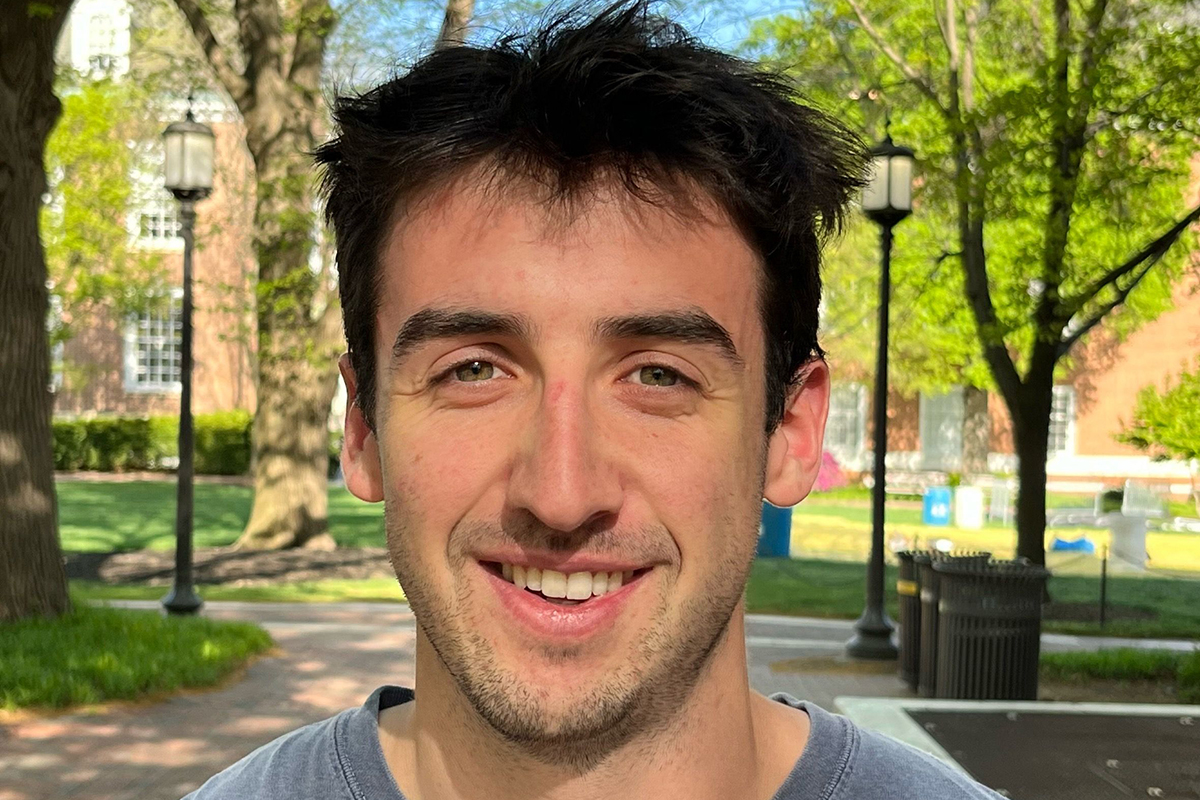Curtis Haas

Since earning undergraduate degrees in physics and math at Colby College, Curtis Haas ’18 has distinguished himself at the Whiting School of Engineering at Johns Hopkins University and beyond.
As a first-year doctoral student in 2022, he was awarded the inaugural Stanley Corrsin Graduate Fellowship in Fluid Dynamics from JHU’s Center for Environmental and Applied Fluid Mechanics.
“Fluids is more of an everyday thing,” Haas says, explaining the appeal of studying turbulence and hypersonic flows. “We don’t really interact with quantum mechanics or general relativity as much.”
This summer, Haas received a prestigious National Defense Science and Engineering Graduate Fellowship from the U.S. Department of Defense. The fellowship is given to exceptional graduate students in science and engineering whose work is important to the mission of the Defense Department. It pays three years of tuition, and provides a stipend, a travel allowance and a mentor.
Haas would eagerly accept an invitation to fly at supersonic speed, but for now he’s on the ground in Baltimore, where we caught up with him as he began the second year of his doctoral studies.
What’s the focus of your research?
Traditionally, there are two ways to study fluids: computationally or experimentally. If we’re running a computer simulation, its accuracy depends on the initial conditions, which are hard to know exactly in real life because the systems are nonlinear and chaotic. On the other hand, experiments are difficult, especially with these highspeed flow regimes. We’re working on hypersonic flows, which are so incredibly fast and hot that you can only have limited sensors on the vehicle, or they’ll break off. Our research combines the two approaches, using limited sensor measurements from flight tests, for example, and working backward to figure out the initial conditions that caused those measurements. Once we have those conditions, we can use the simulation to generate the full flow field. We’ll get the benefits of each method and eliminate the deficiencies.
What does this look like outside the lab?
One important application is that going supersonic — above the sound barrier — over the United States is illegal because of the sonic boom. NASA is currently developing and testing an aircraft that reduces the sonic boom, with the goal of ending the ban on supersonic flight, and there are companies working on commercial travel at supersonic speeds. Hopefully, they’ll make it legal in the near future. Humans always want to go faster, so it seems like eventually we’ll get there.
Are there non-flight-related applications?
Our method is general enough to be used at any flow speed. For example, if there’s an oil spill and you have measurements of the environment or the oil spill, you could work backward and figure out the source of the spill using these methods. It’s the same idea: You have sensor measurements and you want to work out the initial conditions that caused it.
— Sarah Zobel
Editor’s note: This article first appeared in the Fall 2023 issue of The Exeter Bulletin.


